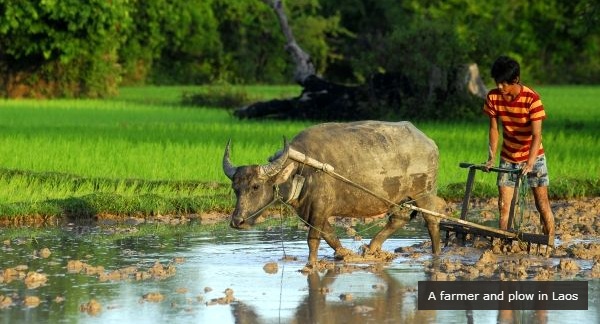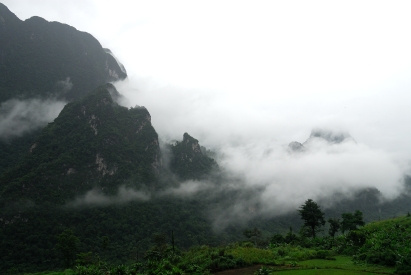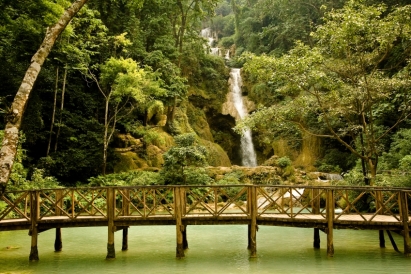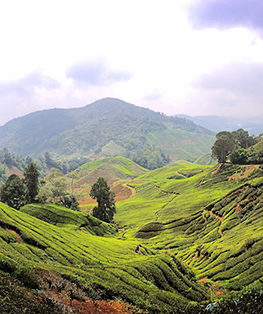Published on May 26, 2010

Trails wind through primeval forests to hidden caves and waterfalls; rope bridges cross rivers; mountain peaks survey wilderness; remote ethnic villages offer lodging to the tired.
Laos presents some 50 hiking circuits and is blazing more for trekkers, who really want to get off the beaten path.
All of these guided treks are based on a community-based tourism (CBT) model – the Nam Ha Project – formulated in Laos’ northwestern Luang Namtha Province, and the project won a United Nations Development Award for alleviating poverty.

The endless green of the Laos countryside
The model empowers poor villagers, who receive contracts to retain stewardship over the trails, and thus the biggest chunk of trekkers’ fees. The Provincial Tourism Departments (PTDs) sign on to oversee the operation, and tour operators agree to use the trained village and lead PTD guides.
Following the model, PTDs and tour companies engage five to six villages to provide guides, home stays, meals, handicrafts and food, as well as to organize village-visit activities.
So where to step into a CBT trek? Luang Namtha’s eco-guide services and dozens of tour operators offer a wide selection, including the Nam Ha project’s inaugural “Ban Nalan Trek”.
This two-day journey starts moderately with a gradual climb to a ridge presenting a view of endless green mountains. Then it’s downhill to tiny Ban Nalan and dinner with ethnic Khmu villagers.
When asked about the CBT benefits, my PTD guide, Mr Bokut, who has conducted this trek since 2001, said Ban Nalan has been building up its community fund, and families can now cover necessities like clothing, medicine and food.
He explained that more than 50% of my tour fee goes directly into the villagers’ pockets for guides, meals, handicrafts, and accommodation: a lodge – one room for women, one for men – overlooking the Nam Ha River. Sleeping quarters are basic but comfortable…cushions and blankets, and the slumber is needed as Day 2 starts with a 600-meter, staircase-steep climb.
Shopping for a CBT trek in Luang Namtha is picture perfect: small operators fronted by whiteboards with departure times and number of trekkers needed. For added confidence, stop by the PTD’s information centers, where the well-versed staff can book your choice of CBT treks.
Luang Prabang, known mostly as a UNESCO World Heritage site, offers a few CBT treks including a simple one-day hike to the popular Kuang Si Waterfalls that stops at a Khmu village for a traditional lunch.

Kuang Si Waterfalls
Closer to Vientiane, a five-hour drive leads to central Laos’ hottest CBT activity – Konglor Cave – a 7.5-km tunnel navigated by boat. The program kicks off near Thakaek, where a trail and then Hinboun River boat ride putters to the vast black mountain hole. Natan Village hosts a home stay before the underground cruise emerges at Konglor Village, which also offers home stays and eco-lodges.
Further south, Savannakhet Province developed several guided and self-guided tour circuits, though the CBT treks in protected areas require guides. What sets Savannakhet’s easily accessible CBT treks apart, besides its natural and cultural attractions, are historic highlights including That Ing Hang stupa, war remnants, French colonial infrastructure, and an ancient library with 1,000-year-old texts.
Champasak, Laos’ southernmost province with an international airport, presents CBT treks in the remote Xepian National Protected Area, with the two-day Ta Ong Trail as its headliner. The trek rolls over small hills, but the thick jungle and stream and river crossings can be quite challenging, but the overnight stay in the ethnic Lavae village, Ta Ong, is among Laos’ most unique.
With the mainstreaming of “responsible, sustainable tourism”, Laos’ CBT trekking options provide more than great adventures; they deliver monetary benefits to far-flung villagers who need them the most.
For more information on CBT trekking in Laos:
Nationwide: visit http://www.ecotourismlaos.com
Luang Namtha: visit http://www.luangnamtha-tourism.org, http://www.muang-sing.com
Luang Prabang: visit http://www.trekking-in-laos.com, http://www.lao-adventures.com
Central Laos: visit http://www.trekkingcentrallaos.com,
Konglor: contact PTD .(JavaScript must be enabled to view this email address)
Savannakhet: contact PTD .(JavaScript must be enabled to view this email address)
Champasak: visit http://www.xepian.org
Vientiane-based Bernie Rosenbloom writes for TTG Asia, PATA Compass, and EcotourismLaos.com; and he co-authored The Responsible Tourism Guide to Cambodia, Laos and Vietnam.






